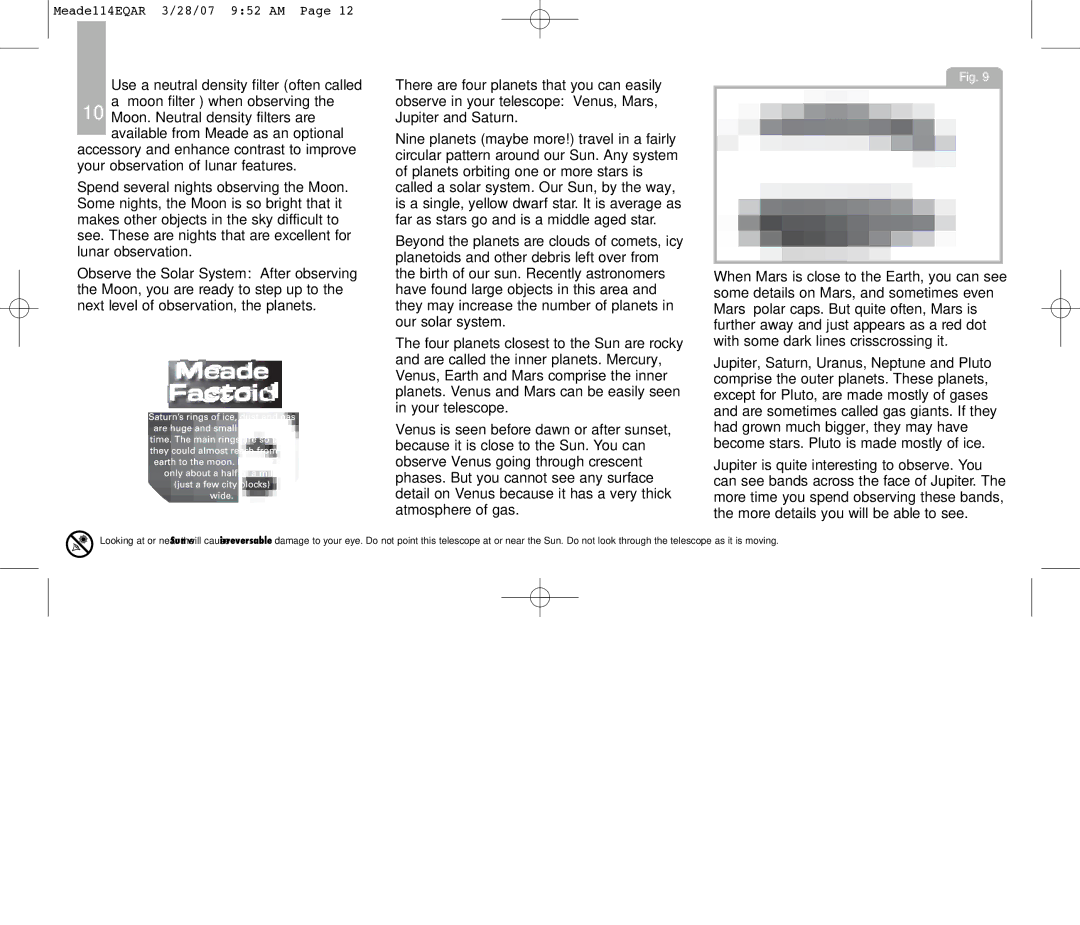114EQ-AR specifications
The Meade 114EQ-AR is a remarkable telescope designed to cater to both beginner and intermediate astronomers who are eager to explore the wonders of the night sky. With its combination of an impressive optical system and user-friendly features, the 114EQ-AR offers a powerful yet accessible platform for stargazing.One of the standout features of the Meade 114EQ-AR is its 114mm aperture, which allows for enhanced light-gathering capability. This means that observers can enjoy clear and bright images of celestial objects, including the Moon, planets, and various deep-sky phenomena. The telescope is mounted on an equatorial mount, which simplifies tracking celestial objects as they move across the sky, making it ideal for astrophotography and detailed observation.
The 114EQ-AR boasts a focal length of 1000mm, providing a versatile range of magnification options. This focal length, combined with high-quality optics, results in sharp and high-contrast images. The telescope is equipped with a 1.25-inch focuser, providing compatibility with a variety of eyepieces and accessories to enhance the viewing experience.
In terms of construction, the Meade 114EQ-AR features a sturdy and durable design, which ensures stability during observations. Its lightweight yet robust construction makes it easily portable, allowing enthusiasts to transport it to various observational sites effortlessly. The telescope also includes an adjustable tripod that can be set up quickly, ensuring that users spend more time enjoying the sky rather than fumbling with equipment.
Another notable aspect of the Meade 114EQ-AR is its included software and resources. The telescope is often packaged with a comprehensive star guide and astronomy software, helping users to locate and identify celestial objects more easily. This combination of educational tools and quality optics makes the 114EQ-AR an excellent choice for those looking to deepen their understanding of astronomy.
Overall, the Meade 114EQ-AR is a feature-rich telescope that combines quality optics, sturdy construction, and user-friendly functionality. Whether you're interested in observing distant galaxies or simply want to enjoy a close-up view of the Moon, the 114EQ-AR offers a window to the universe that is both exciting and accessible.

